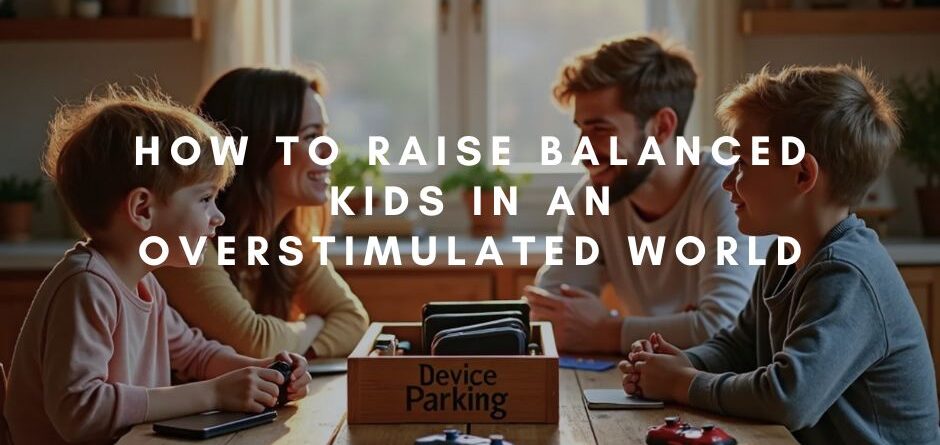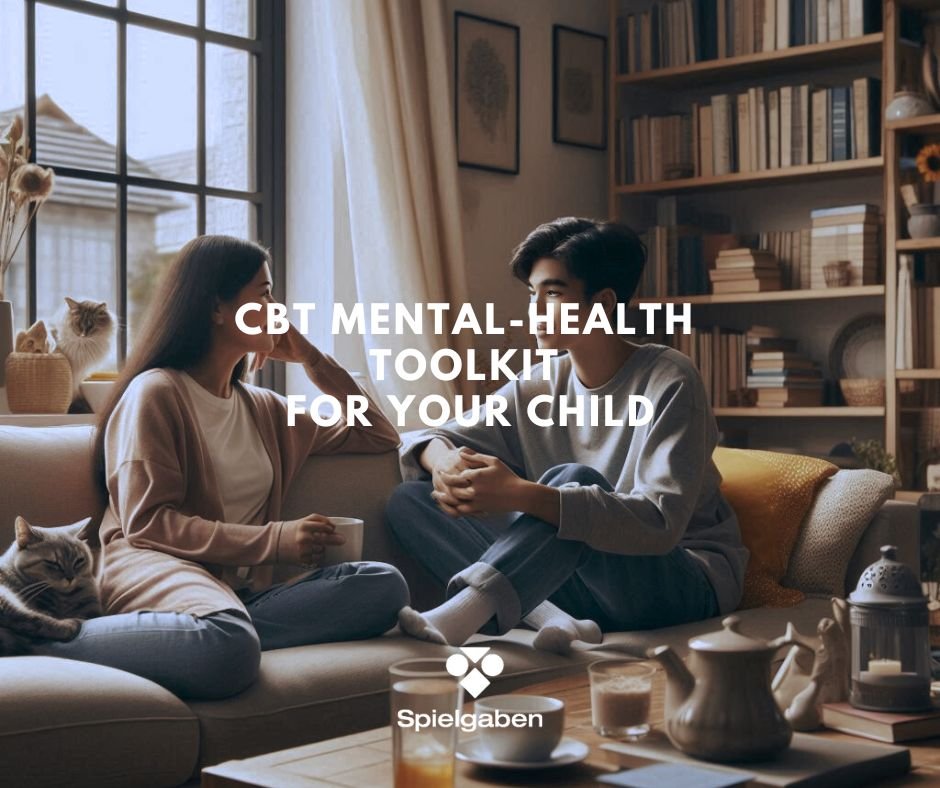How to Raise Balanced Kids in an Overstimulated World
We’re All Addicts Now
Picture this: It’s 3 PM on a Tuesday. Your toddler is melting down over the wrong cup color, your teenager hasn’t looked up from their phone since breakfast, and you’re secretly eating Halloween candy while scrolling social media in the pantry.
Welcome to the multi-generational dopamine circus.
We live in a “dopamine world” where instant gratification isn’t just available – it’s mandatory. Your kids can summon entertainment with a swipe, order food with a tap, and get validation with a post. Meanwhile, you’re probably doing the same thing, just with better vocabulary and more guilt.
The Modern Parent’s Dopamine Menu:
- That third cup of coffee while doom-scrolling
- Midnight online shopping (“retail therapy”)
- Binge-watching Netflix after bedtime
- Checking your phone 96 times daily (the average)
Signs Your Family is Caught in the Dopamine Trap:
- Your child can’t wait 30 seconds without a breakdown
- Family dinner involves multiple screens
- “I’m bored” is heard more than “please” and “thank you”
- You’ve used screen time as reward, punishment, babysitter, and peace-keeper in one day
- Your toddler unlocks your phone better than your mother-in-law
The good news? Recognizing you’re trapped is the first step to freedom.
Why Everyone is Cranky
Here’s a sobering fact: despite having more conveniences and entertainment than any generation in history, both parents and children are measurably less happy than decades ago.
The Family Misery Formula: Easy access + instant gratification + constant stimulation = chronically dissatisfied humans
Your great-grandmother walked to the library for books and waited weeks for letter responses. Your kids get upset if videos take more than three seconds to load. We’ve trained an entire generation to have the patience of caffeinated squirrels.
What This Looks Like:
- Morning battles over screen time
- Kids who can’t entertain themselves
- Family members physically present but mentally elsewhere
- Constant need for stimulation
- Difficulty enjoying simple pleasures
The Sneaky Truth: We’ve become a society that medicates every uncomfortable feeling. Kid’s bored? Hand them a tablet. Feeling anxious? There’s an app. Awkward dinner conversation? Everyone checks phones.
We’ve accidentally taught our children that discomfort is dangerous and must be avoided at all costs, creating kids (and adults) who can’t sit with difficult emotions or find contentment in quiet moments.
The Pleasure-Pain Seesaw
Your child’s brain has a tiny seesaw inside it. On one side is pleasure, on the other is pain. Every enjoyable experience – screen time, sugary snacks, new toys – tips the pleasure side down. But the brain immediately works to balance things out by tipping the pain side down equally.
This is why your child needs “just one more” episode, cookie, or game. They’re not being defiant; they’re chasing the balance their brain is trying to restore.
The Tolerance Trap explains:
- Why begged-for toys become “boring” within hours
- Why screen time limits feel impossible to enforce
- Why they can’t enjoy simple activities anymore
- Why everything needs to be “more exciting”
Signs Your Child is Stuck on the Pain Side:
- Frequent outbursts over minor disappointments
- Inability to enjoy previously loved activities
- Constant requests for something new
- Difficulty sleeping or relaxing
- Increased sensitivity to normal frustrations
The Good News: Remove excessive stimulation, and your child’s brain will rebalance itself. But it takes time, and there will be pushback.
The Magic of Strategic Boredom
Your child needs to be bored – not just occasionally, but regularly and intentionally. Think of boredom as CrossFit for your kid’s brain: uncomfortable in the moment, but incredibly strengthening over time.
The Dopamine Fast for Families:
Phase 1: Assessment (Week 1) Track your family’s current stimulation diet:
- How much screen time is everyone getting?
- What activities cause meltdowns when stopped?
- When do family members reach for stimulation?
- What simple pleasures has your family stopped enjoying?
Phase 2: The Reset (Weeks 2-5) Choose one focus area for four weeks (the time needed for dopamine receptors to return to baseline):
Option A: Screen Time Reset
- Implement screen-free mornings and evenings
- Create device parking stations for meals
- Replace passive screen time with interactive activities
Option B: Instant Gratification Reset
- Introduce waiting periods for non-essential requests
- Practice delayed gratification with small rewards
- Create “boring” time slots with no structured activities
Option C: Sensory Overload Reset
- Reduce background noise and constant music
- Simplify the visual environment
- Create quiet decompression spaces
What to Expect During Reset:
- Days 1-3: Confusion and testing boundaries
- Days 4-10: Peak resistance and creative bargaining
- Days 11-21: Gradual acceptance and breakthroughs
- Days 22-28: New patterns feeling normal
Real Success Story: “We went cold turkey on weekday screens for a month. The first week was hell. But by week three, my kids were building elaborate blanket forts, my daughter started writing stories again, and family dinners became enjoyable. My son even said, ‘Mom, I forgot how fun Legos were.'”
Embracing Strategic Discomfort
Your family needs more discomfort, not less. We’re talking about strategic, intentional discomfort that builds resilience and, paradoxically, leads to greater happiness.
Family-Friendly “Discomforts”:
Physical Discomfort:
- Cold showers (start with 30 seconds)
- Walking instead of driving short distances
- Playing outside in less-than-perfect weather
- Exercise that’s challenging but not harmful
Emotional Discomfort:
- Allowing disappointment without immediately fixing it
- Not rescuing kids from every social awkwardness
- Letting them work through frustrations first
- Teaching them to sit with difficult emotions
Mental Discomfort:
- Homework before fun activities
- Reading books slightly above comfort level
- Learning skills requiring practice and patience
- Problem-solving without immediate answers
The Waiting Game: In our Amazon Prime world, waiting has become a lost art. But the ability to delay gratification strongly predicts success and happiness later in life.
Practical Waiting Training:
- Save exciting purchases for special occasions
- Cook meals together (waiting for things to bake)
- Plant gardens and wait for growth
- Start multi-day projects
Fun Facts: Research shows controlled cold exposure increases dopamine levels by up to 250% – and the effect lasts for hours, unlike sugar or screen time’s immediate spike followed by a crash.
Your Family’s Transformation Timeline
Here’s your 4-week family reset plan:
Week 1: Assessment
Track your family’s current stimulation diet:
- How much screen time is everyone actually getting?
- What activities cause the biggest meltdowns when stopped?
- When do family members reach for stimulation (boredom, stress, transitions)?
Weeks 2-5: Choose One Focus Area
Option A: Screen Time Reset
- Implement screen-free mornings and evenings
- Create “device parking” stations during family meals
- Prepare for pushback – it’s normal and temporary
Option B: Instant Gratification Reset
- Introduce waiting periods for non-essential requests
- Practice delayed gratification with small rewards
- Create daily “boring time” where nothing structured happens
Option C: Strategic Discomfort
- Try cold showers (start with 30 seconds)
- Walk instead of driving short distances
- Let natural consequences teach lessons instead of rescuing constantly
What to Expect During the Reset
- Days 1-3: Confusion and testing boundaries
- Days 4-10: Peak resistance (this is when most parents give up)
- Days 11-21: Gradual acceptance and occasional breakthroughs
- Days 22-28: New patterns starting to feel normal
Conclusion: Your Family’s Journey From Dopamine Junkies to Balanced Humans
Congratulations! You’ve made it through the hardest part – understanding the problem and learning the solutions. Now comes the really hard part: implementing these changes with real children in a real house while dealing with real life. But here’s the thing – you don’t have to transform your entire family overnight.
“Small, consistent changes create massive results over time.”













LEAVE A COMMENT